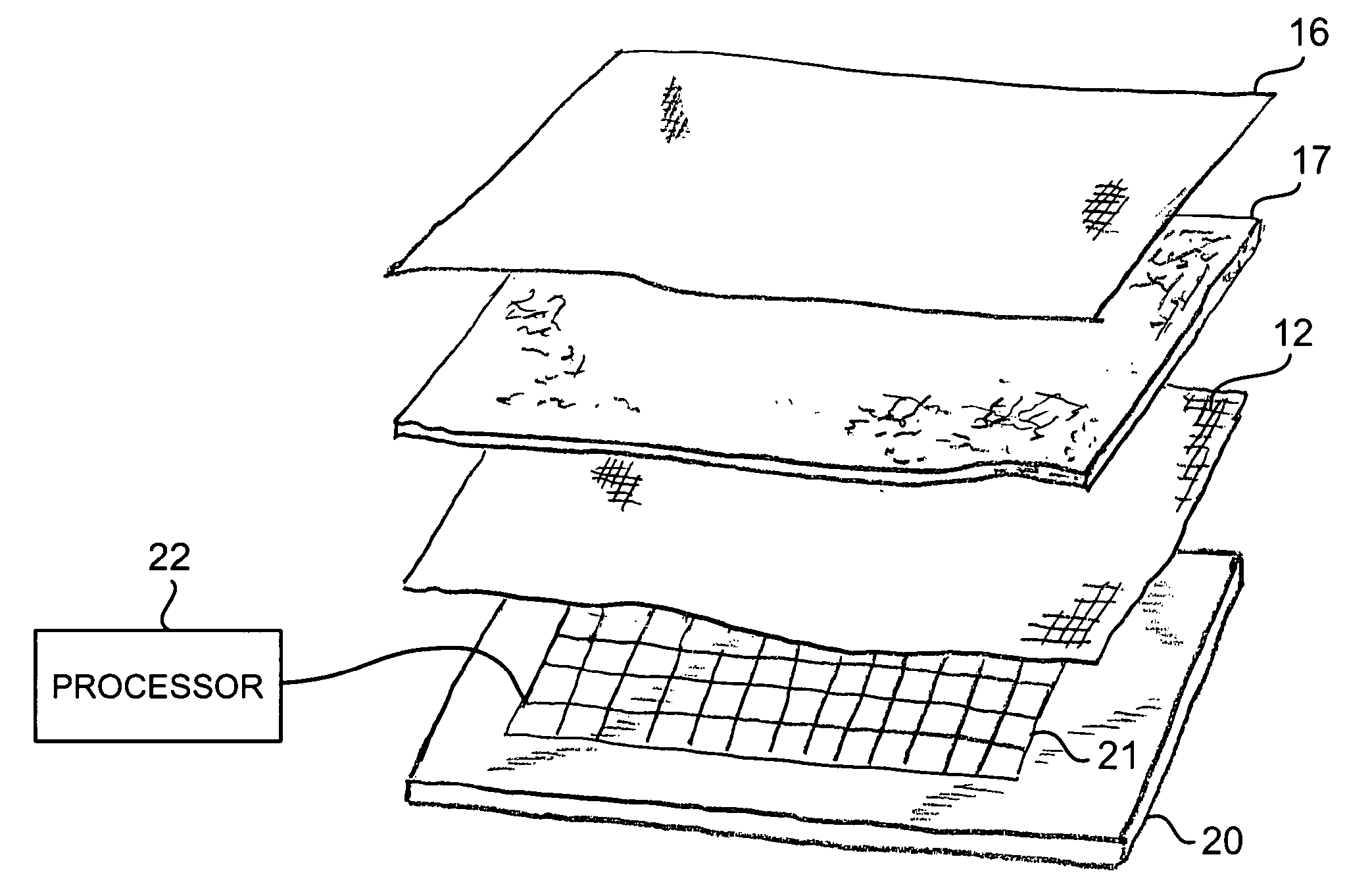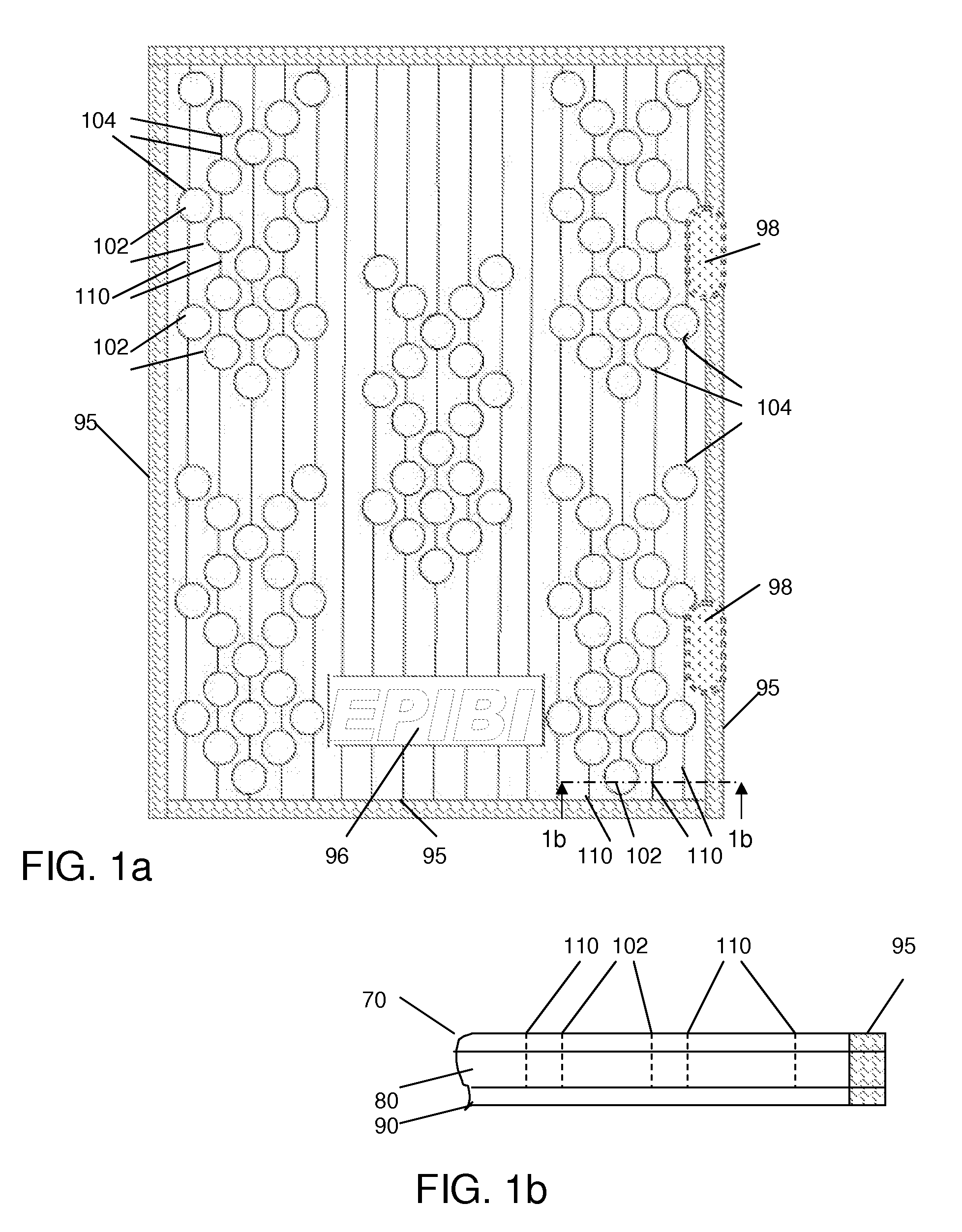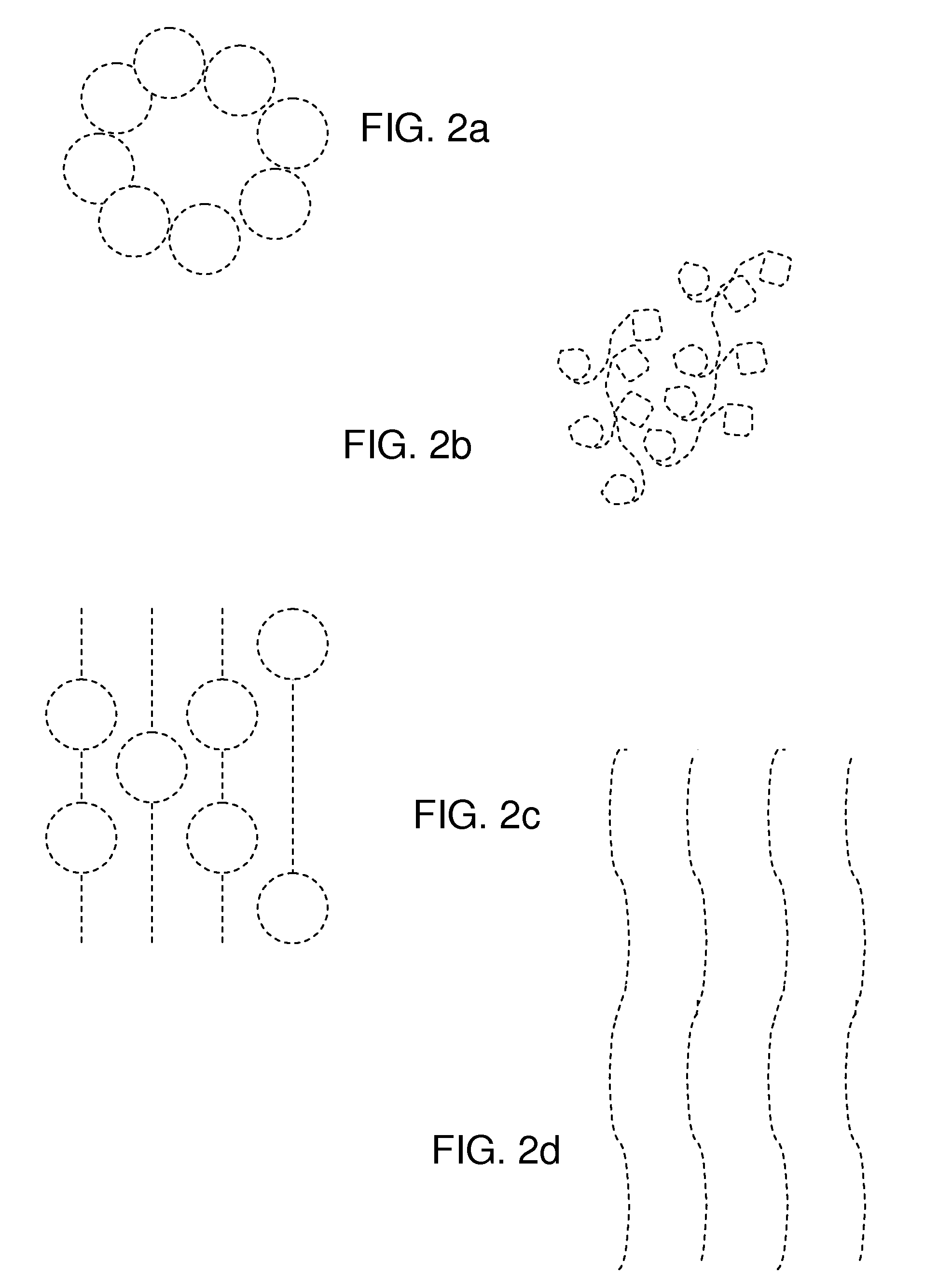Devices for prevention of pressure ulcers
a technology for pressure ulcers and devices, applied in the field of devices for preventing pressure ulcers, can solve the problems of pressure ulcers that can develop, the scope and cost of pressure ulcers in the united states are significant, and the aging increases the risk, so as to prevent pressure ulcers, dry quickly, and minimal puckering
- Summary
- Abstract
- Description
- Claims
- Application Information
AI Technical Summary
Benefits of technology
Problems solved by technology
Method used
Image
Examples
Embodiment Construction
[0027]According to the present invention, a support surface for prevention of pressure ulcers is a multi-layer composite fabric which is assembled to overcome most of the important factors that are involved in formation of such ulcers. Each layer addresses at least one specific risk factor for pressure ulcer formation while the assembly as a whole enhances these features, at the same time taking into consideration the qualities that make such a product easy to manufacture and affordable such that it can be made widely available for both institutional and home use.
[0028]In the preferred embodiment, a three-layer assembly includes an upper layer, typically for direct skin contact, which is a thin (<1 mm, preferably less than 0.5 mm), lightweight (˜2.5 ounce) polyester that is breathable, non-shearing, anti-microbial, moisture wicking and quick drying. Examples of appropriate fabrics for this upper layer include the fabric described in U.S. Pat. No. 6,277,770 of Smith, (incorporated he...
PUM
 Login to View More
Login to View More Abstract
Description
Claims
Application Information
 Login to View More
Login to View More - R&D
- Intellectual Property
- Life Sciences
- Materials
- Tech Scout
- Unparalleled Data Quality
- Higher Quality Content
- 60% Fewer Hallucinations
Browse by: Latest US Patents, China's latest patents, Technical Efficacy Thesaurus, Application Domain, Technology Topic, Popular Technical Reports.
© 2025 PatSnap. All rights reserved.Legal|Privacy policy|Modern Slavery Act Transparency Statement|Sitemap|About US| Contact US: help@patsnap.com



